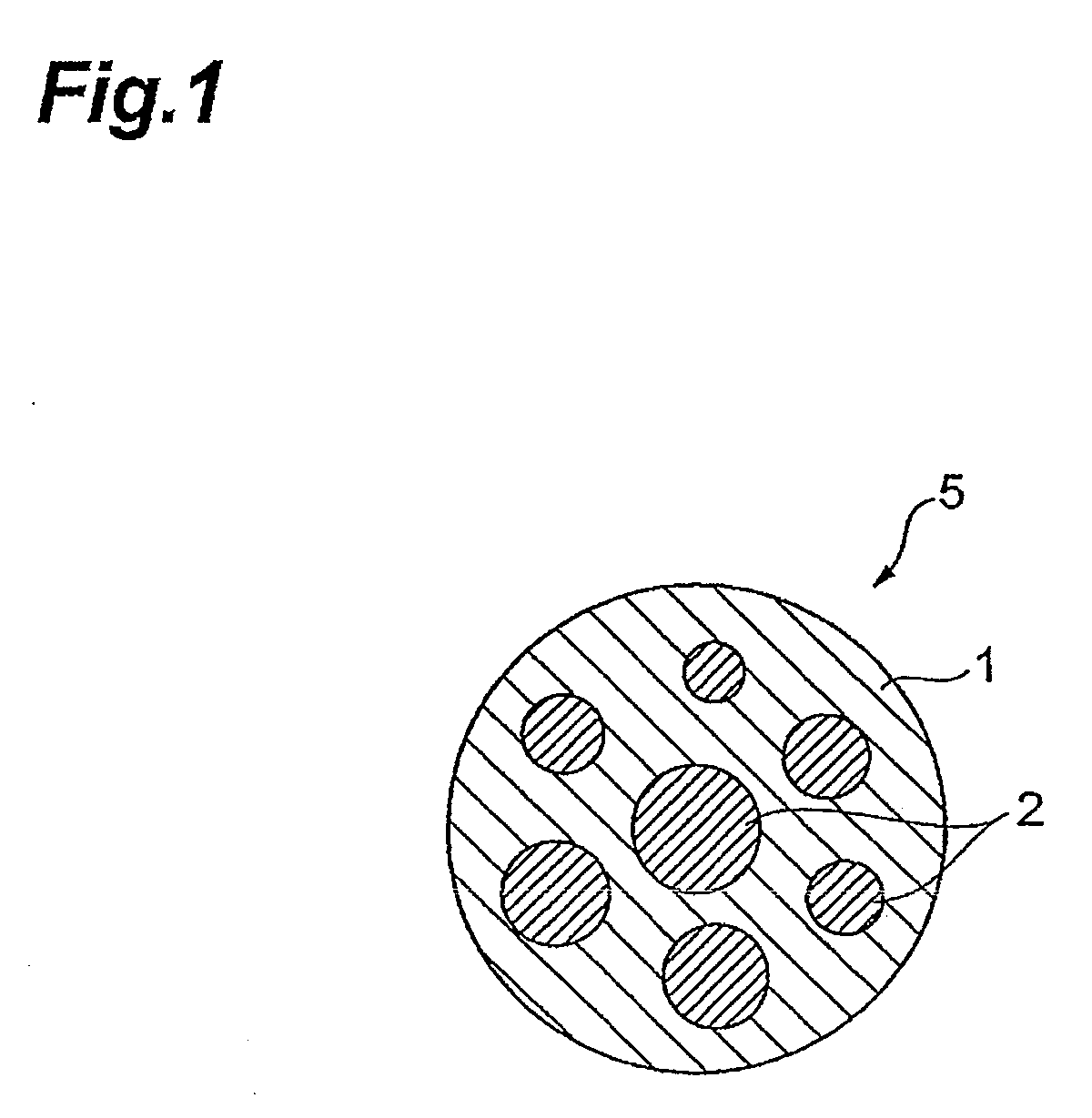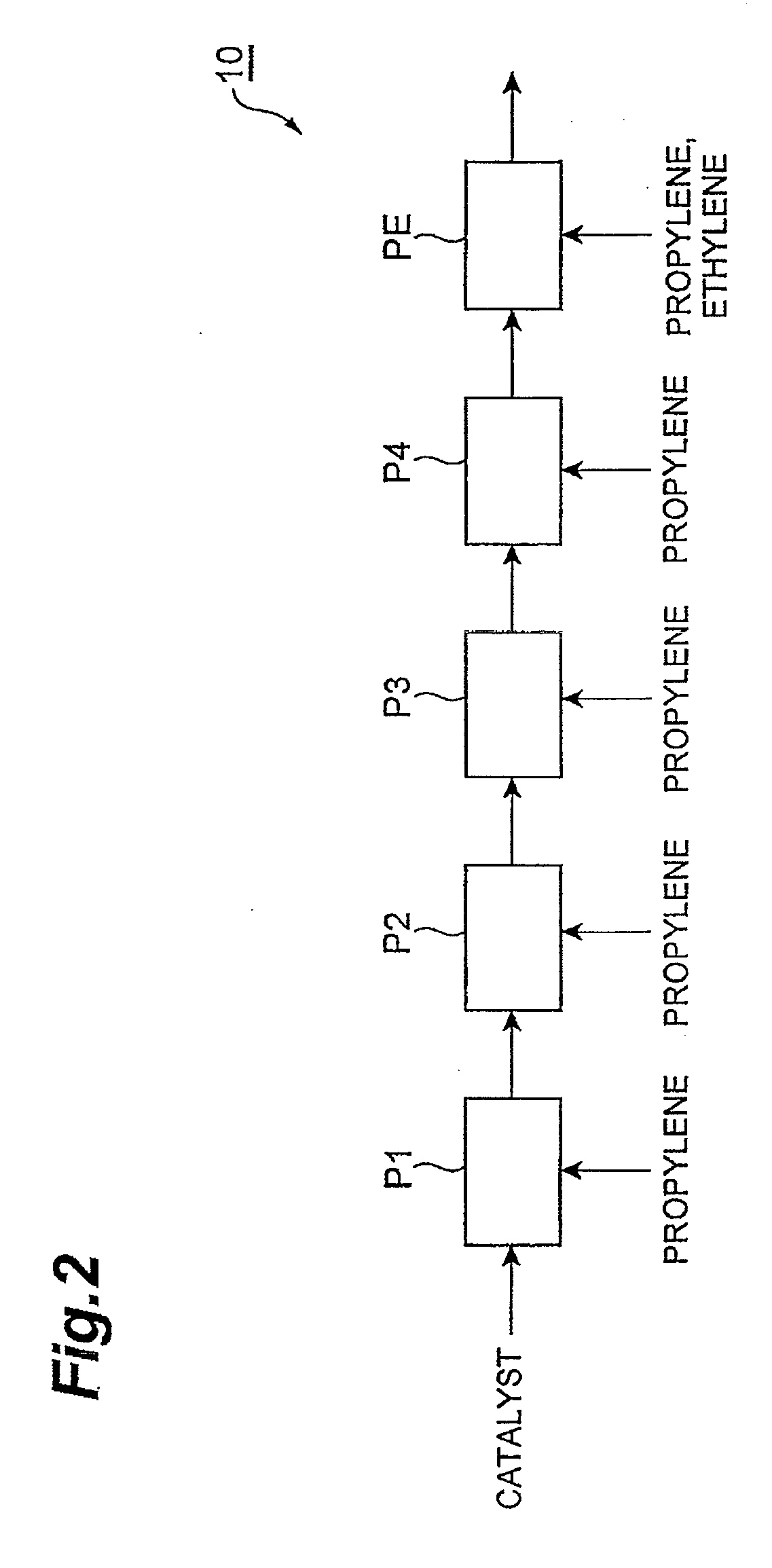Propylene-based block copolymer particles
a technology of propylene-based block copolymer and particle, which is applied in the direction of chemical recycling, etc., can solve the problems of insufficient reduction of gel content in conventional propylene-based block copolymer, and achieve the effects of good external appearance, high uniformity of ethylene content distribution, and good rigidity and impact resistan
- Summary
- Abstract
- Description
- Claims
- Application Information
AI Technical Summary
Benefits of technology
Problems solved by technology
Method used
Image
Examples
example 1
Preparation of Solid Catalyst
[0119]The atmosphere inside a SUS reaction vessel equipped with a stirrer and having an inner capacity of 200 L was replaced with nitrogen. 80 L of hexane, 6.55 mol of tetrabutoxytitanium, 2.8 mol of diisobutyl phthalate, and 98.9 mol of tetraethoxysilane were loaded into the vessel and stirred to give a solution. 51 L of a diisobutyl ether solution of butylmagnesium chloride with a concentration of 2.1 mol / L was added dropwise to the aforementioned solution slowly over 5 hr, while maintaining the temperature inside the reaction vessel at 5° C. Upon the completion of the dropwise addition, stirring was carried out for 1 hr at room temperature, solid-liquid separation was performed at room temperature, and the solid product was washed three times with 70 L of toluene. Toluene was then added so that the slurry concentration would become 0.2 kg / L, and then 47.6 mol of diisobutyl phthalate was added, followed by a reaction for 30 min at 95° C.
[0120]Solid-liq...
example 2
[0134]A solid catalyst component and a slurry of the prepolymerized catalyst component were prepared by the same methods as those of Example 1. Using the slurry, four-stage homopolymerization of propylene was conducted in four tandem-connected reactors, giving polypropylene particles. Propylene-based block copolymer particles were then produced by one-stage copolymerization of propylene and ethylene in the presence of the polypropylene particles. Each polymerization process will be described below.
[0135]First-Stage Propylene Polymerization (Liquid-Phase Polymerization)
[0136]Homopolymerization of propylene was carried out using a reactor of a vessel type equipped with a stirrer and having an inner capacity of 40 L. Specifically, propylene, hydrogen, triethylaluminum, cyclohexylethyldimethoxysilane, and the slurry of prepolymerized catalyst component were continuously supplied to the reactor. The reaction conditions were as follows: polymerization temperature: 78° C., stirring rate: 1...
example 3
[0145]A solid catalyst component and a slurry of the prepolymerized catalyst were prepared by the methods same methods as those of Example 1. Using the slurry, four-stage homopolymerization of propylene was conducted in four tandem-connected reactors, giving polypropylene particles. A powdered propylene-based block copolymer was then produced by one-stage copolymerization of propylene and ethylene in the presence of the polypropylene particles. Each polymerization process will be described below.
[0146]First-Stage Propylene Polymerization (Liquid-Phase Polymerization)
[0147]Homopolymerization of propylene was carried out using a reactor of a vessel type equipped with a stirrer and having an inner capacity of 40 L. Specifically, propylene, hydrogen, triethylaluminum, cyclohexylethyldimethoxysilane, and the slurry of prepolymerized catalyst component were continuously supplied to the reactor. The reaction conditions were as follows: polymerization temperature: 78° C., stirring rate: 150...
PUM
| Property | Measurement | Unit |
|---|---|---|
| Temperature | aaaaa | aaaaa |
| Specific volume | aaaaa | aaaaa |
| Fraction | aaaaa | aaaaa |
Abstract
Description
Claims
Application Information
 Login to View More
Login to View More - R&D
- Intellectual Property
- Life Sciences
- Materials
- Tech Scout
- Unparalleled Data Quality
- Higher Quality Content
- 60% Fewer Hallucinations
Browse by: Latest US Patents, China's latest patents, Technical Efficacy Thesaurus, Application Domain, Technology Topic, Popular Technical Reports.
© 2025 PatSnap. All rights reserved.Legal|Privacy policy|Modern Slavery Act Transparency Statement|Sitemap|About US| Contact US: help@patsnap.com



